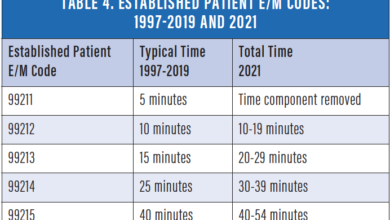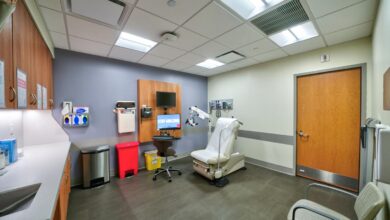Pediatric Scoliosis: 7 Signs Parents Should Be Aware of

Scoliosis can pose significant challenges to a child’s health and overall quality of life if left undetected and untreated. Early identification of pediatric scoliosis allows healthcare providers to create effective strategies for managing the condition while reducing associated discomfort.
In this article, we’ll explore the basics of pediatric scoliosis, delve into seven early warning signs that may indicate its presence, and discuss the various treatment options available.
By being proactive in our understanding, we can ensure that children with pediatric scoliosis receive timely intervention, fostering healthy development throughout their formative years.
What is Pediatric Scoliosis?
Pediatric scoliosis refers to an abnormal curvature of the spine in children. This condition can occur at various ages and stages of growth. While a normal spine looks straight when viewed from behind, a scoliosis spine will have an unnatural lateral (sideways) curvature from the front.
There are three common types of pediatric scoliosis:
- Idiopathic Scoliosis: The most common type. Cause is unknown, but often genetic.
- Congenital Scoliosis: A rare spine abnormality, often detected at birth.
- Neuromuscular Scoliosis: Caused by defects in the nerves and muscles that support the spine. It’s found in patients with spina bifida, cerebral palsy, and muscular dystrophy.
More often than not, pediatrics scoliosis is diagnosed by a doctor through a physical exam. From there, your doctor will discuss interventions, such as the surgical options for back pain relief.
What are the 7 Early Signs of Pediatric Scoliosis?
Being aware of the early signs of pediatric scoliosis can be beneficial in detecting the issue and seeking prompt medical attention. Here’s a list of 7 common indicators that parents should know.
1. Uneven Shoulders
When one shoulder appears higher than the other when standing straight, that could be an early sign of pediatric scoliosis. To make sure that this isn’t just a posture issue, ask your child to correct their shoulders. If they experience pain or discomfort, speak to a medical professional.
2. Prominent Shoulder Blade
One early sign of pediatric scoliosis is when one shoulder blade appears more prominent or sticks out compared to the other one. Other symptoms of a prominent shoulder blade include difficulty moving arms above the head, weak shoulders, and poor ball-and-socket alignment.
3. Asymmetrical Waistline
With any type of scoliosis, you’ll see a noticeable difference in height or curve on one side of the waist. The curve in the waist is often described as an “S”-shape, large, or in the middle of the spine. In really severe pediatric scoliosis, the waistline will take on a “C”-shape curve instead.
4. Discrepancy in Hip Height
A child with scoliosis may have one hip that sits higher or protrudes more than its counterpart, leading to an imbalance in posture. As the child grows, their muscles will compensate for their poor posture, making them grow weaker. If this isn’t corrected, this discrepancy gets worse.
5. Leaning to One Side
The child might have a tendency to lean towards one direction while walking or standing if they have pediatric scoliosis. This is usually because standing upright is too uncomfortable. If you notice your child doing this, ask them why. If it’s for comfort, consider going to the doctor.
6. Misaligned Head Position
Pediatric scoliosis can also make a child’s head position seem off. When viewed from behind, the child’s head might not align with the centerline of their lower back, hinting at spinal misalignment. Check if your child naturally goes to this position during rest, like while sleeping.
7. Rib Hump When Bending
In a bending test performed by professional healthcare providers, an asymmetric bulge on one side of the rib cage becomes evident when the child bends forward. This is an immediate cause of concern and should be addressed immediately, as your child likely has pediatric scoliosis.
How is Pediatric Scoliosis Treated?
When pediatric scoliosis is diagnosed (this usually includes a history exam, physical examination, and an X-Ray), your child can start treatment. When caught early, pediatric scoliosis can be well managed, and it can even prevent further damage from occurring.
Here are some of the most common treatment options:
- Observation
For mild cases where the curve is less than 20 degrees, healthcare professionals might opt for regular check-ups and monitoring to track any changes.
- Bracing
For moderate cases (curve between 20 and 45 degrees), wearing a custom-fitted brace can help prevent the spinal curvature from worsening. The goal of bracing is not to correct the curve but rather to stabilize it during growth periods.
- Physical Therapy
Scoliosis-specific exercises can help improve posture, strength, and flexibility while mitigating pain or discomfort associated with imbalanced muscles.
- Pain Management
Depending on individual needs, pain-relief measures might include over-the-counter medications, prescription drugs, acupuncture, or massage therapy.
- Surgical Intervention
In severe cases (curves above 45-50 degrees) or when there’s rapid curve progression, spine surgery may be recommended. Procedures such as spinal fusion, growth modulation, or vertebral body tethering can help correct the spine.
Following any treatment plan, maintaining a healthy lifestyle that includes regular exercise and routine check-ups with doctors is crucial to managing pediatric scoliosis in the long term.



